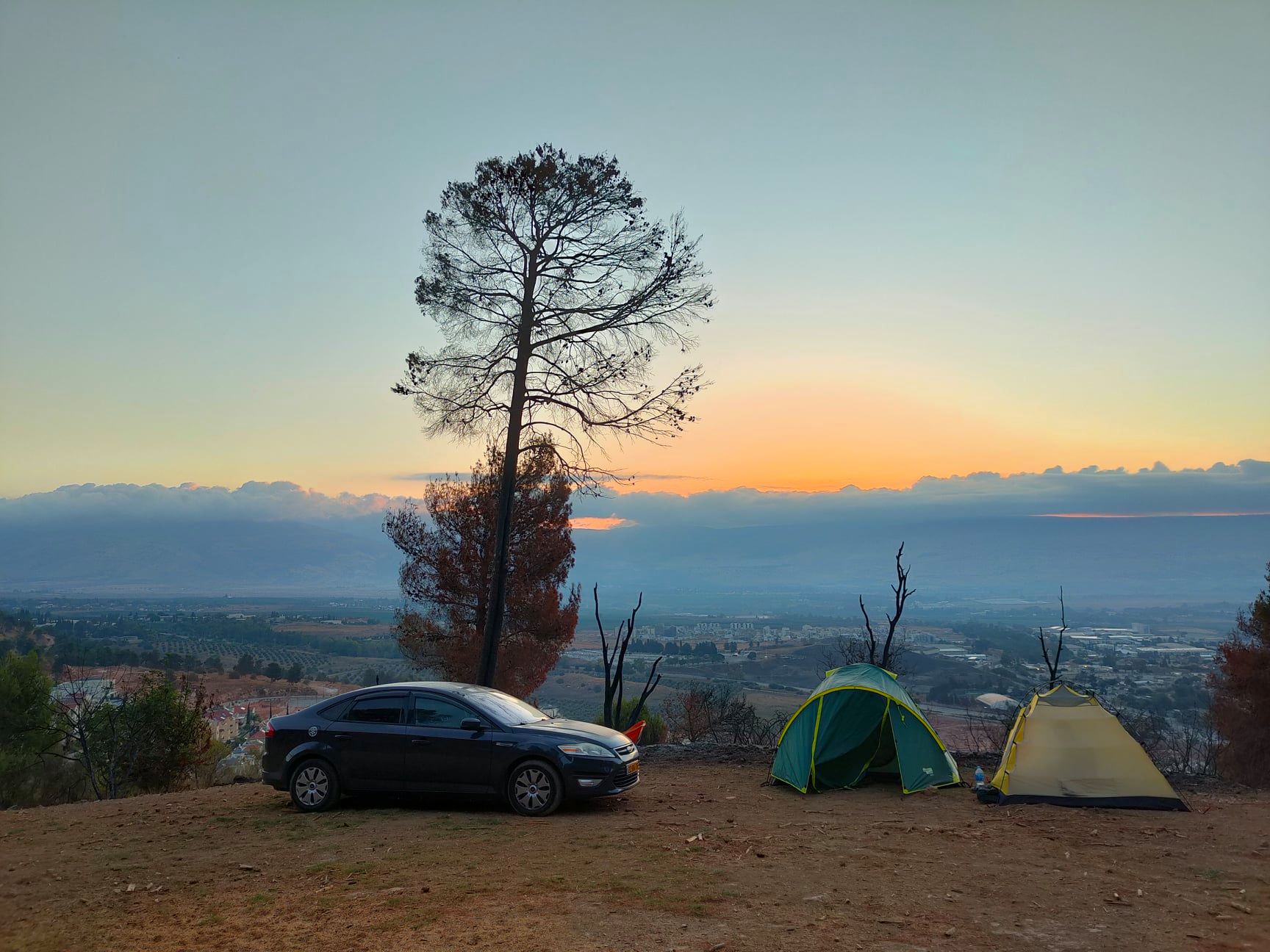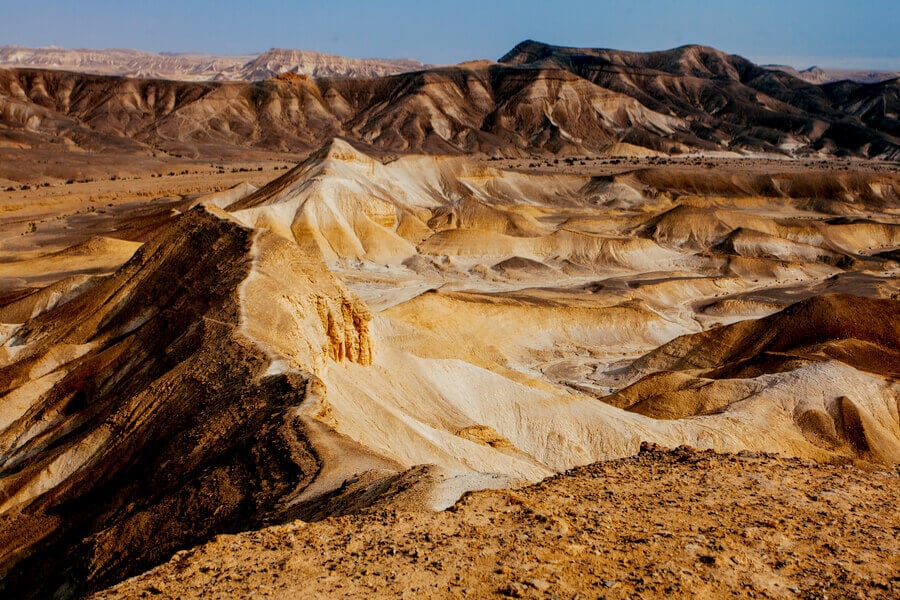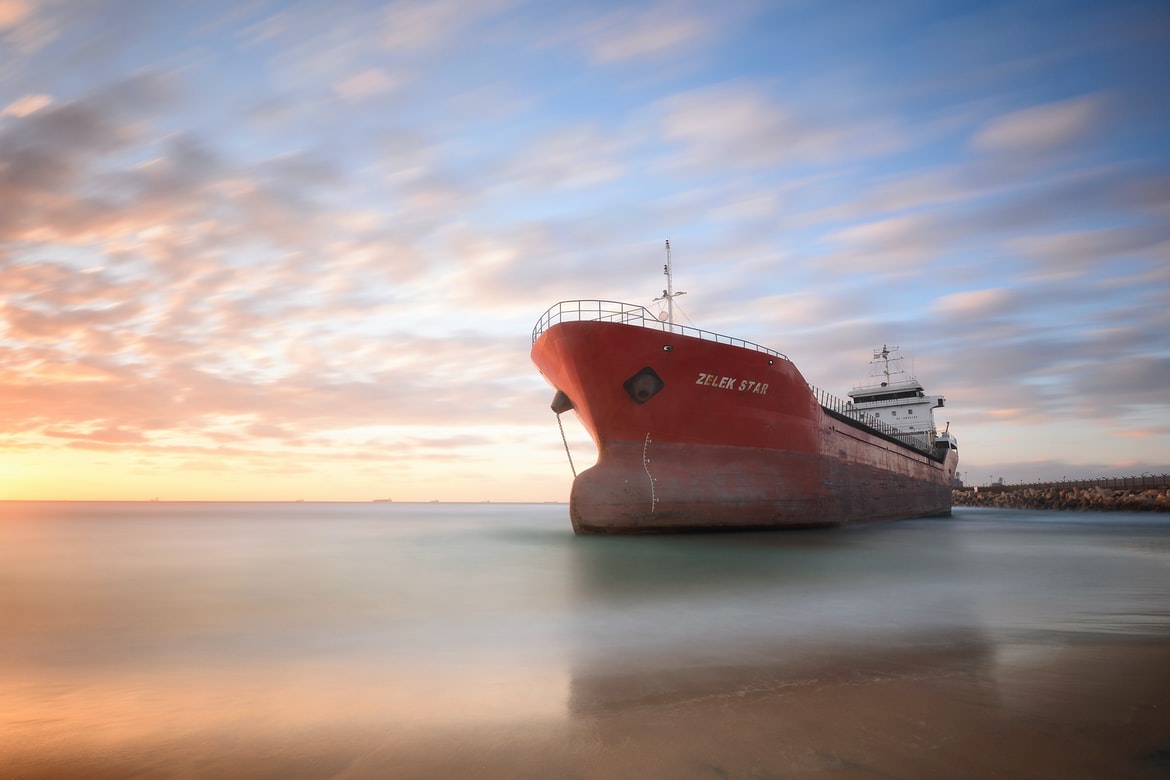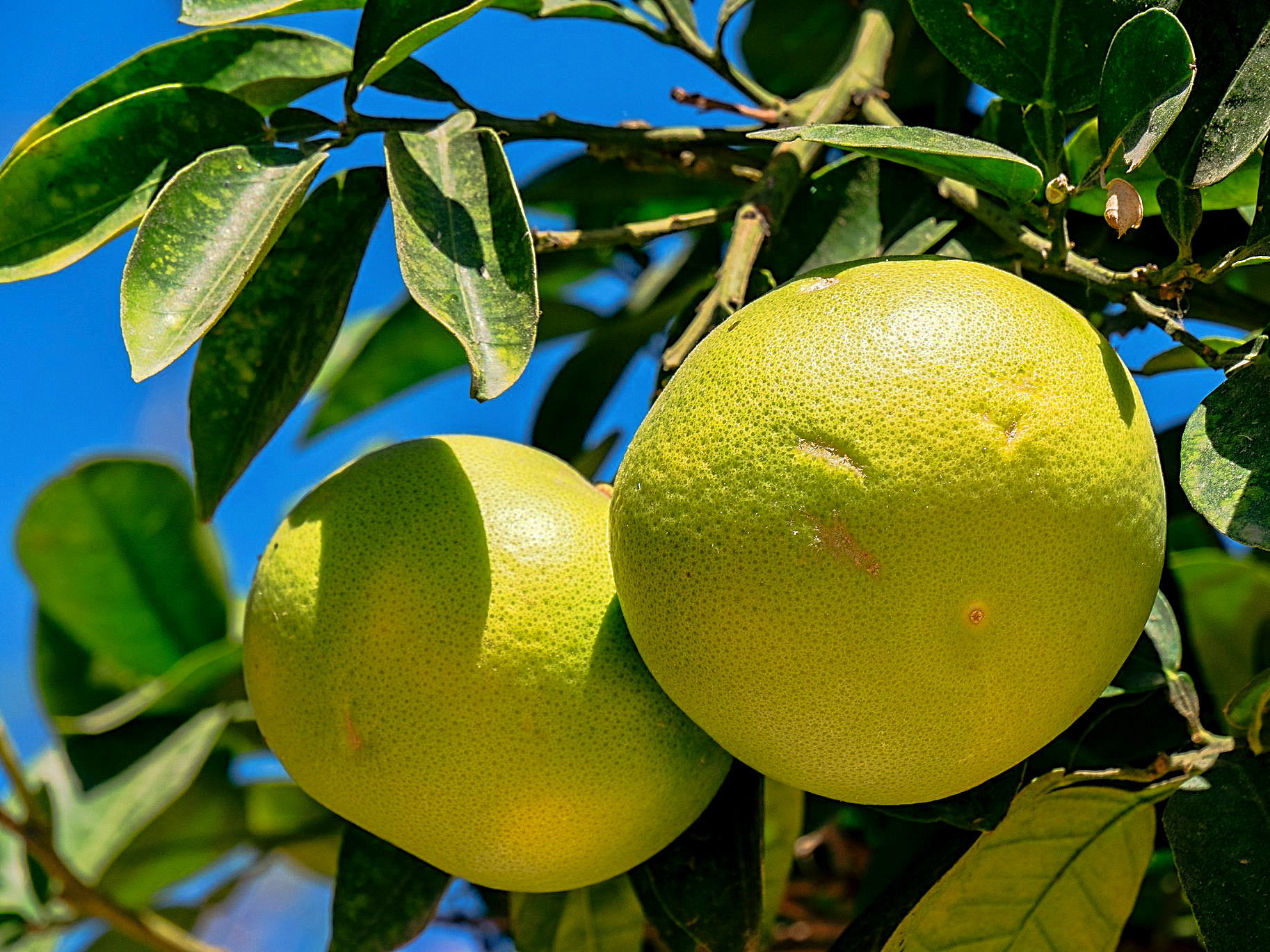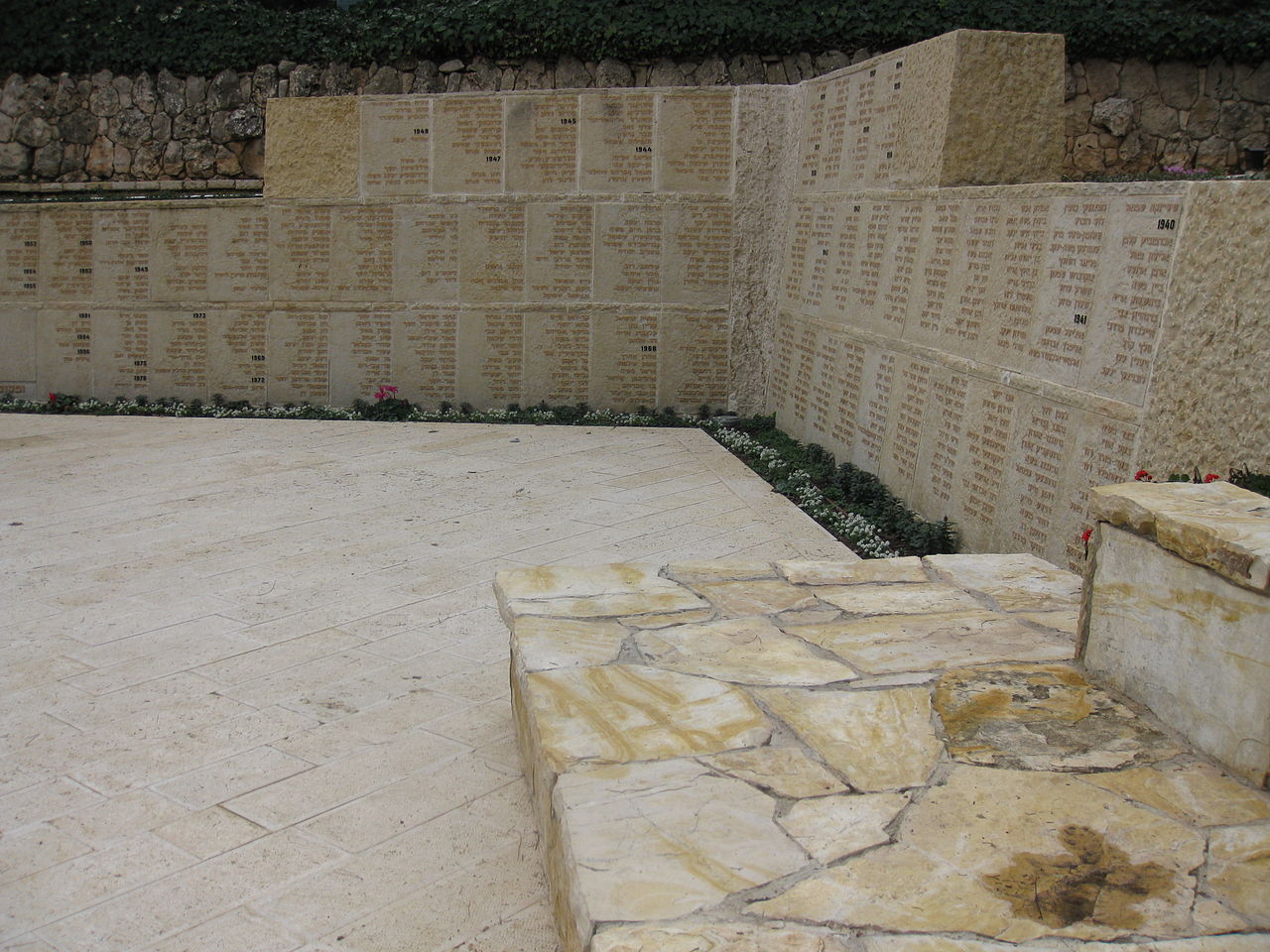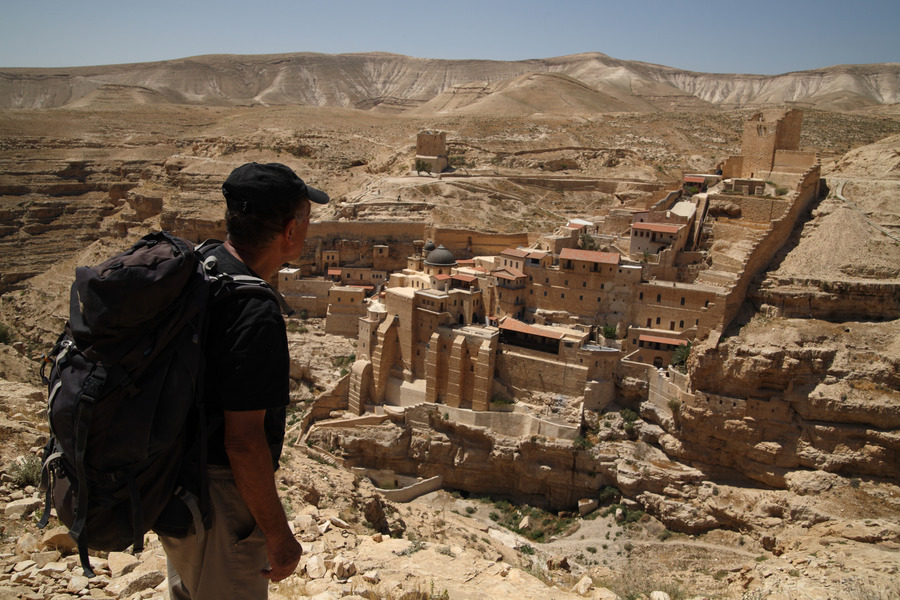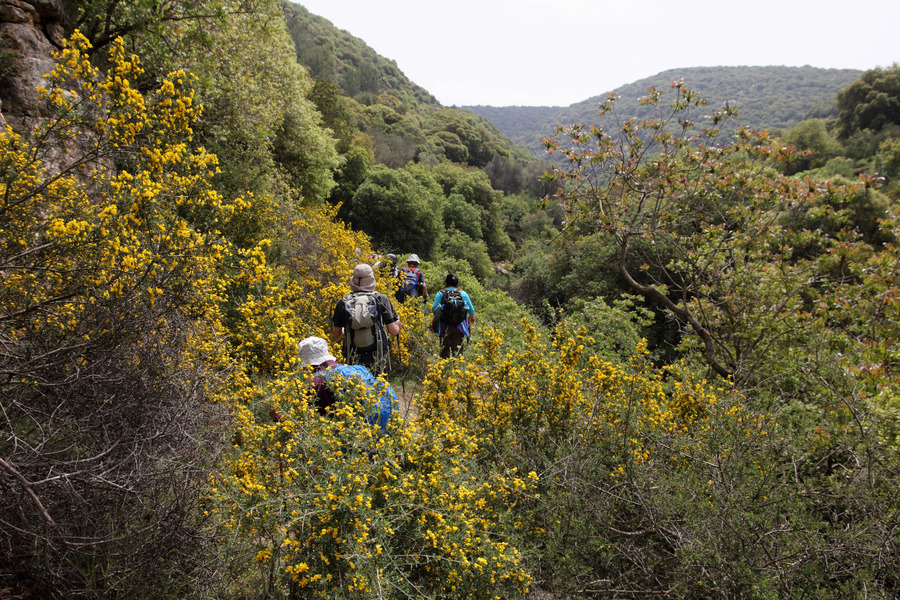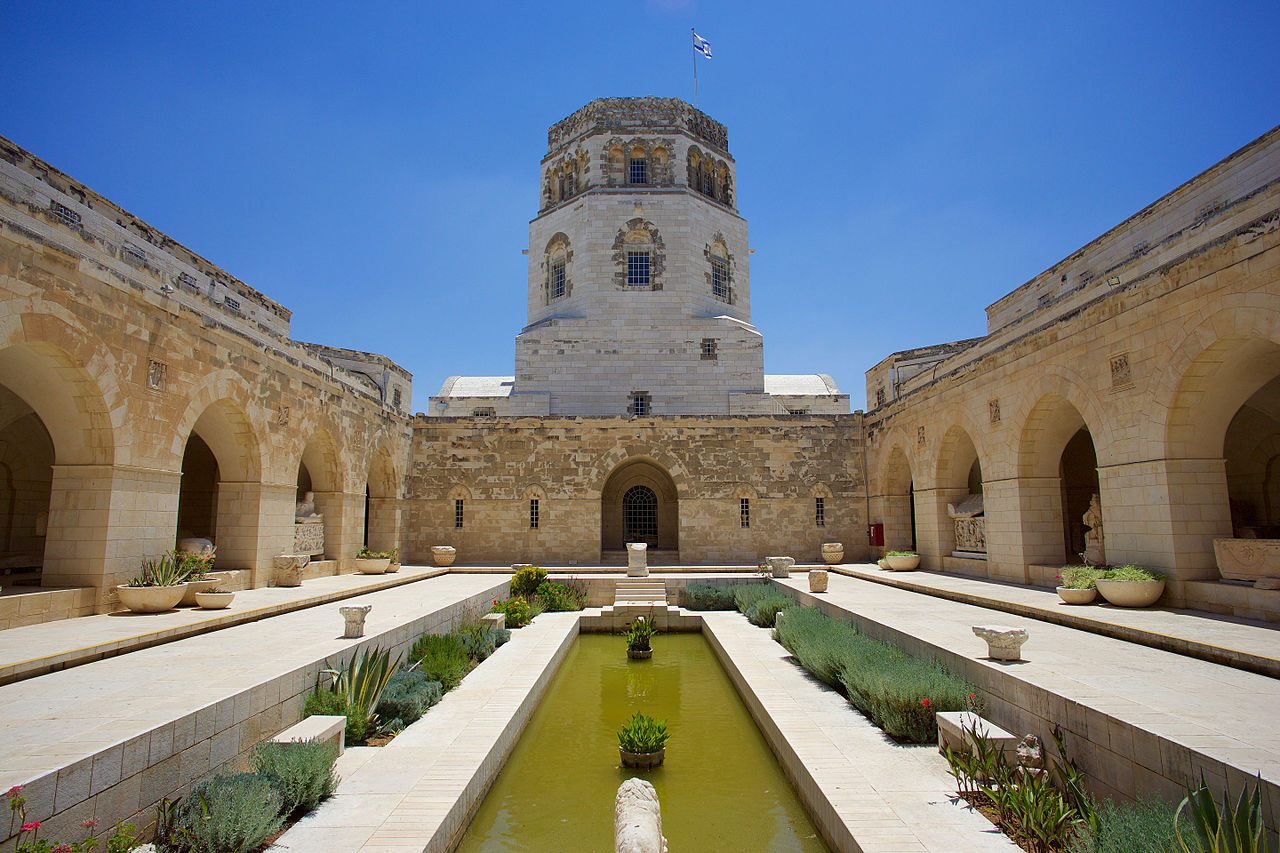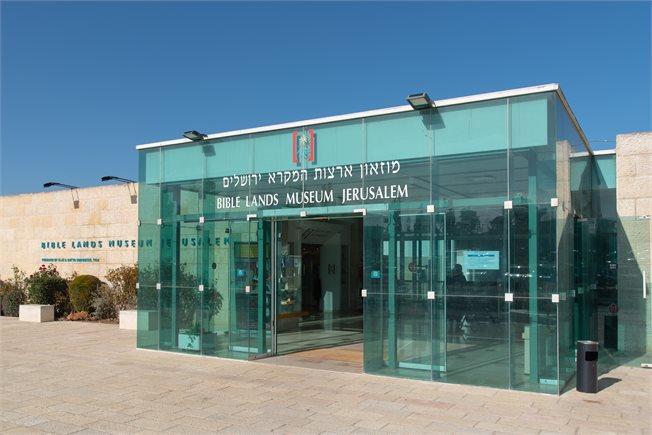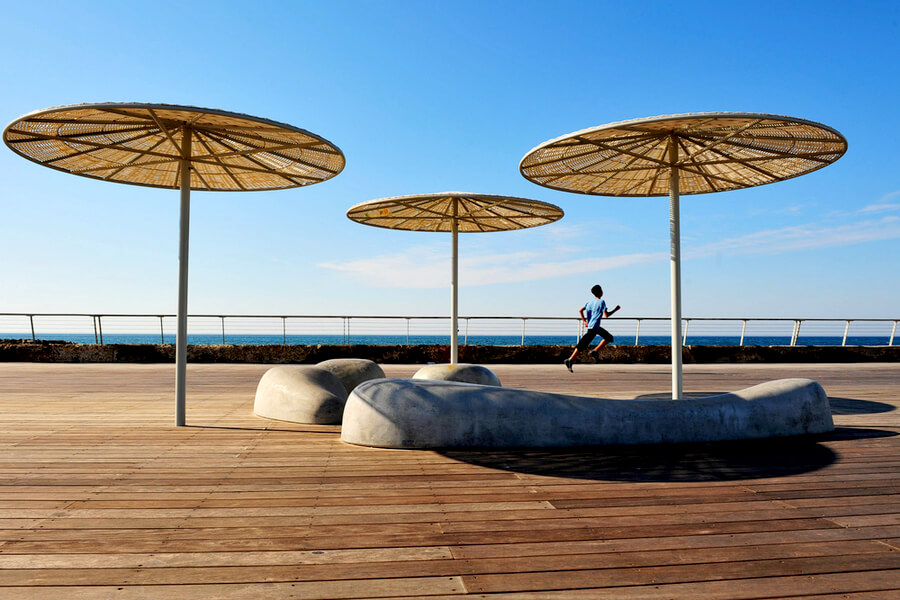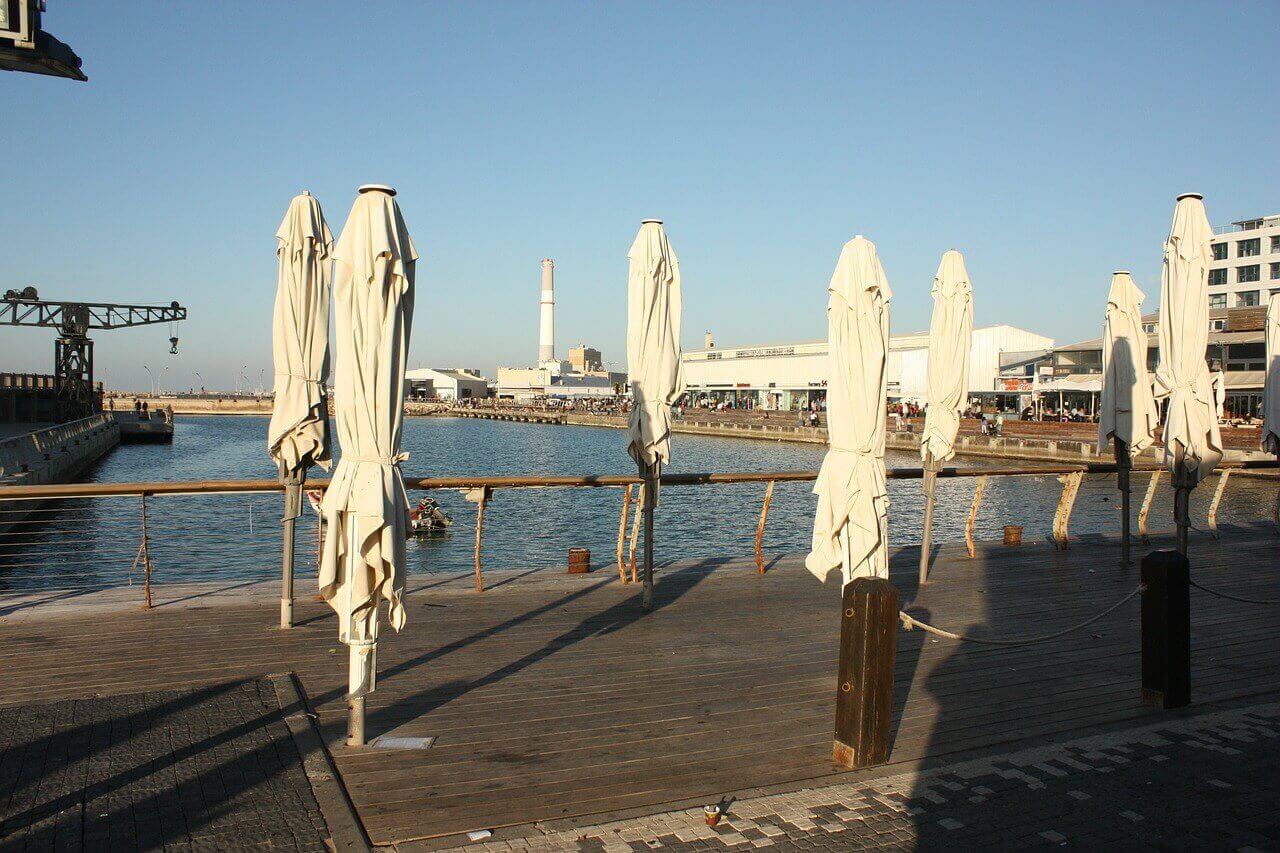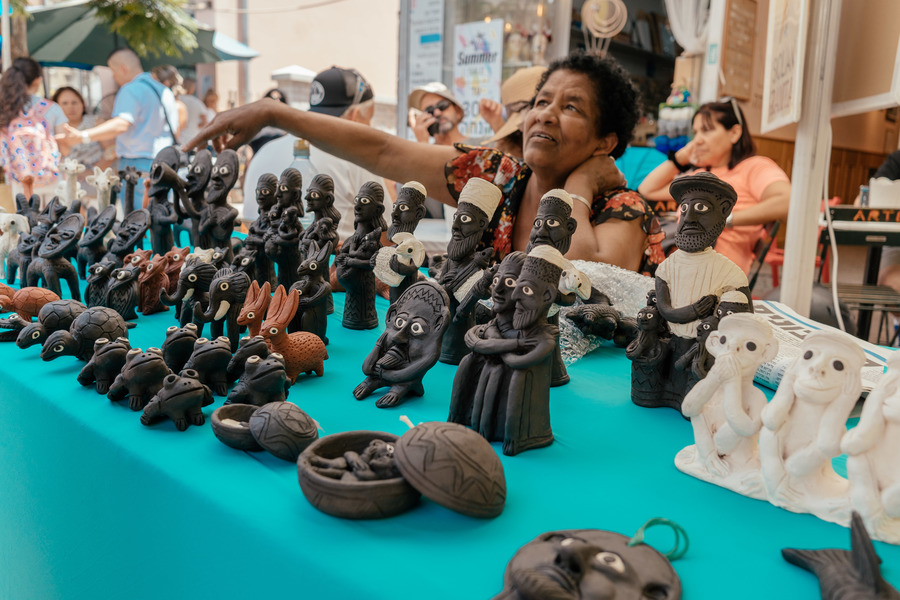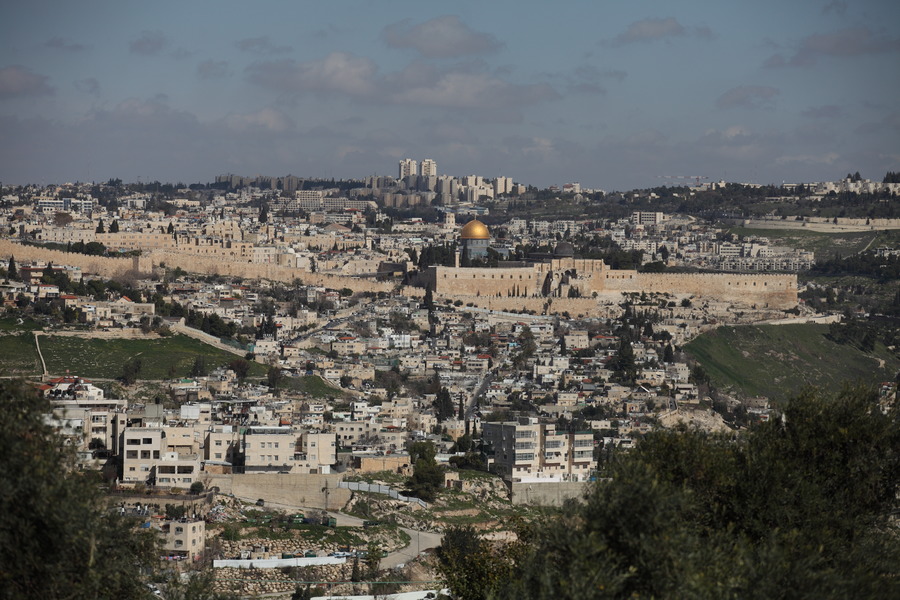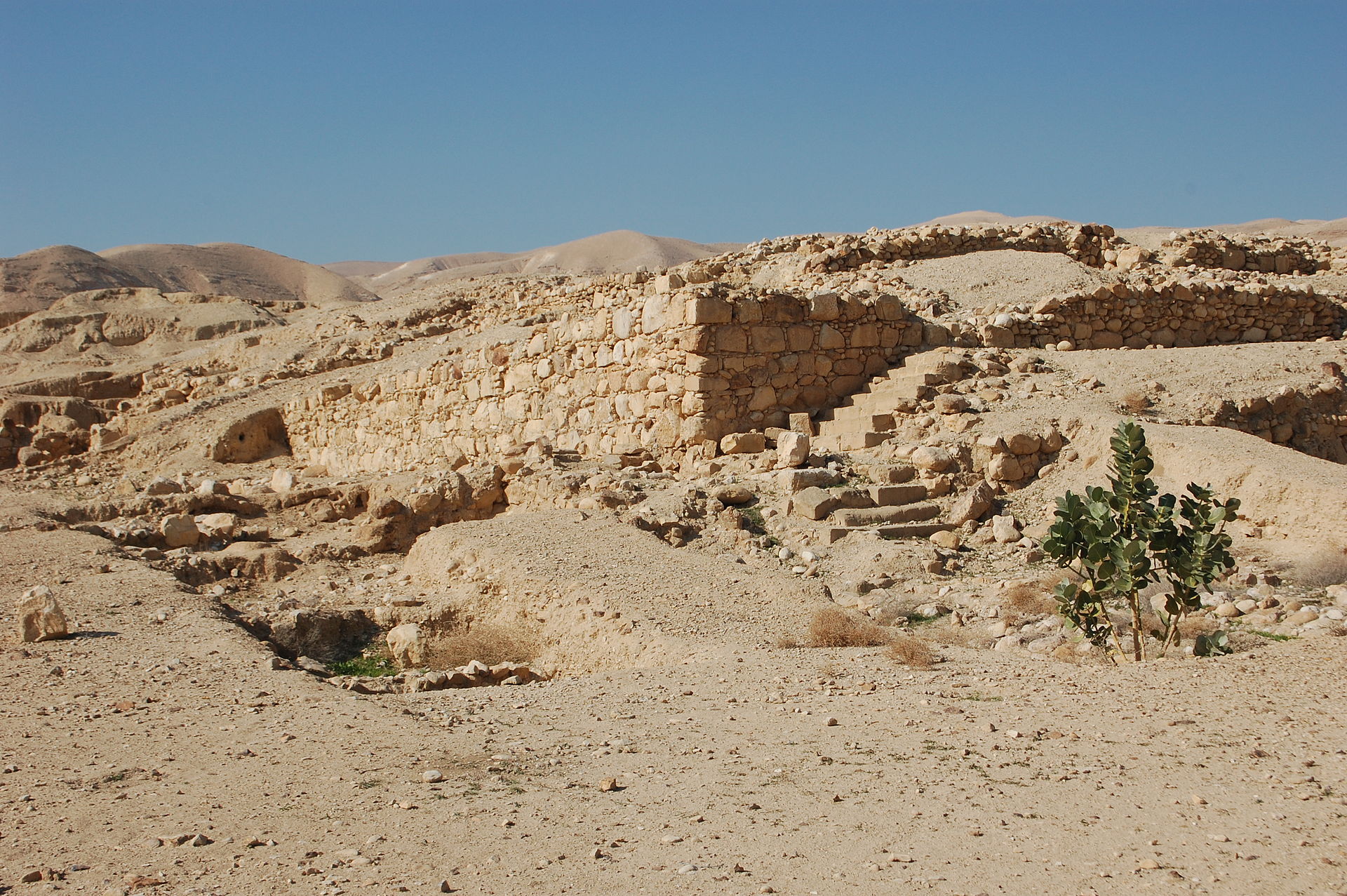Deserts in Israel
Israel receives a great deal of tourism, which is no surprise - it has beaches, nature reserves, archaeological sites, endless places of worship, the exciting city of Tel Aviv and the spiritual mecca of Jerusalem. You can ski in the Golan Heights, dive with tropical fish in the Red Sea, explore Herodian ruins and Crusader towns in Caesarea and Acre and trek for hours in pastoral settings. And that’s before you’ve even got started on the hundreds of museums, art galleries and music venues that are dotted all over the country.The stunning landscape of Judean Desert, Israel. Photo credit: © ShutterstockWhat people often don’t think of, however, when talking about things to do in Israel is spending time in the Israel desert region. So is Israel mostly desert? Indeed, many people don’t actually realise that almost two-thirds of Israel’s landmass is actually desert - beginning in Beer Sheva. This southern city, just an hour and a half’s drive from Tel Aviv is a gateway to three of the deserts of Israel - the Negev, Arava and Zin which stretch all the way down to Israel’s most southern point - Eilat. The fourth, the Judean Desert, can be found east of Jerusalem, extending down to the Dead Sea.The early Zionists, who arrived in Israel at the turn of the 20th century had a vision - to transform the country and, in particular, the empty desert lands. “It is in the Negev that the creativity and pioneer vigour of Israel shall be tested,” said David Ben-Gurion, Israel's first prime minister. The deserts of Israel have indeed bloomed in the last half a century. Indeed, more and more Israeli families, today, are trading in city life for the Negev desert.Mamshit, the best restored ancient city in the Negev Desert, Israel. Photo credit: © Doron Nissim. Published with permission of the Israel Nature and Parks AuthorityStarry Nights, Rustic Zimmers and Plenty of Fresh AirThe fact is that the desert part of Israel has low levels of pollution, so not only will you be able to breathe well, you’ll also be able to see more stars at night than you ever imagined. Israel’s south is a paradise for wildlife too - yaelim (ibexes), camels, birds of prey...not to mention springs and oases you can stumble upon, after walking for hours in barren areas. Even better, when the rains have come in winter, the north of the country, the Negev, Arava and Zin areas remain pretty dry (unless you’re witness to some flash flooding which, although potentially dangerous, can also be fascinating to watch).The Negev, Arava and Zin areas are best visited between October/November and March/April before temperatures rise to uncomfortable levels. Days are warm and you may well end up with a suntan, although when the sun leaves the sky and night falls the temperatures drop dramatically, so arrive prepared (with plenty of warm clothes). In the last 20 years, more Israelis have moved south and the result is noticeable - small farms that sell local goats cheese, an artists' quarter in Mitzpe Ramon, with an artisan bakery next door, vineyards set up by enterprising folks, and all kinds of accommodation - from modern campsites and rustic zimmers to luxury hotels and glamping sites in the Israeli desert with every amenity you can think of, and then some! Tourism is booming and the desert is blooming!Shivta, an ancient city in the Negev Desert, Israel. Photo credit: © Doron Nissim. Published with permission of the Israel Nature and Parks AuthorityFrom canyons and craters to hiking trails and chocolate toursToday we’ll be looking at the first three, those covering much of the south of Israel. The fact is that if you’re prepared to get out of your comfort zone, you’ll be overwhelmed by what you see in this part of the country. Whether it’s exploring the astonishing Ein Avdat canyon, admiring the extraordinary views from atop the crater at Mitzpe Ramon and its surroundings, hiking in the desert,or trekking in Timna National Park, with its red-orange coloured rocks, you’ll have an experience many of your friends back home will envy. Finally, get ready for some adrenaline-rush activities too - whether it’s rappelling down the side of a cliff, taking a four-wheel-drive jeep tour, riding horseback, mountain biking, or running a desert marathon - an Israeli desert experience is a treat for the adventurer. And if you’ve got young kids, that’s no barrier either - they can enjoy petting alpacas and antelopes at different farms, taking ‘chocolate tours’ at the Yotvata kibbutz and sleeping in a Bedouin tent on a mattress. Let’s take a closer look at the famous deserts in Israel…Nubian ibexes on the edges of Makhtesh Ramon, Israel. Photo credit: © Jenny Ehrlich1. The Arava Desert, IsraelThe Arava desert, which is divided into the Central and Southern regions, is a valley that begins in the Dead Sea and stretches all the way down to Eilat, bordering Jordan to the east. It covers about 1500 square kilometres and, historically, was part of the ancient Incense Route.The Arava desert climate is, by any standards, harsh and unforgiving. It is extremely dry, with low annual rainfall (around 25-50 mm) and temperatures that can often soar to above 45 degrees in the height of summer. The Arava also suffers from a continuous lack of water - this is not just because of low levels of precipitation but also because there are very few permanent sources of water. Flash Floods, Sandstorms and Extreme Temperatures in the Arava DesertBecause there has been so little rainfall for tens of thousands of years, soil development and rock erosion are very slight. This means the saline content of the soil can be quite shallow and very high in saline. Temperatures also vary dramatically between day and night and summer and winter. As a result, conditions for growing are not optimum and flora and fauna face many challenges. Most plants live in the dry riverbeds (where occasionally there are flash floods) and also have to cope with the occasional sandstorms, which spread across the desert very quickly!Historically, the Arava is home to the remains of several Israeli fortresses at Ein Hatseva (‘Ein’ means ‘spring’ in Hebrew). This spring is a source of fresh water in the area and clearly the area had strategic significance since it was perched on a hill. Many fortresses were built in this area over around 1,000 years, serving as military centres for the area, as well as a spot through which caravans could pass. The Arava Desert landscape, Israel. Photo credit: © Jenny EhrlichNature reserves, solar power farms and birdwatching sites in the Arava DesertSomething else that makes the Arava interesting is that, notwithstanding its inhospitable arid climate, there are still many species that live and thrive in the desert - hyenas, reptiles, scorpions, spiders and an array of unusual birds. A great place to see them is at the Hai-Bar Yotvata Reserve, which is run by the Israel Nature and National Parks Protection Authority. The Hai Bar, about 35 km from Eilat, and located near Yotvata kibbutz, on salt flats, was established with the goal of returning to the Arava and Negev Desert animals that lived in biblical times. These ‘lost’ species are now being bred here and include gazelles, sand cats, ostriches, asses, leopards and wolves. Once grown, many are released into the desert.In terms of employment, many of the Arava’s residents today are involved with tourism and agriculture, using cutting-edge technology to make this barren part of the country fertile. Arava farmers today are involved in vegetable and fruit production, flower growing and all kinds of environmentally-friendly projects, including algae growing, solar power and fish farming.Indeed, many of the kibbutzim in the area - including Lotan, Yotvata, Ketura, Neot Smadar and Yahel - offer tourists the opportunity to look around their premises - between them, they have dairy farms, cafes and restaurants, a ‘chocolate milk’ tour and ice cream making workshops at Yotvata and birdwatching facilities at Lotan. Many of them also offer overnight accommodation in the form of lovely zimmers (rustic cabins, with modern touches, and a hearty Israeli breakfast included the following morning).A Desert Oasis and a Farm in the Arava Desert, Israel.Photo credit: © Jenny Ehrlich2. The Negev Desert, IsraelThe Negev is a desert (and semi-desert) in the southern part of Israel, characterised by rocky brown mountains, craters and wadis (dry river beds that flourish for short periods after rainfall). The Hebrew root of the word comes from the term ‘dry’ and in Arabic, it is called ‘an-Naqab or an-Naqb’ meaning ‘mountain pass.’The Negev Desert is bordered on the west by Egypt and to the south the Arava. Geologists believe the area to be around 1.8 million years old, giving it the distinction of being the oldest discovered surface on earth. Broadly, it can be split into different parts - western and central, northern, a high plateau and then the Arava Valley. The northern part receives a fair amount of rain (around 300mm annually) and its soil is quite fertile, whilst the western part receives less - around 250 mm annually - and has soil that is more sandy. The central Negev receives only 200 mm of rain each year, and its soil is far more impervious. The high plateau - the Negev Heights - is between 370 metres and 520 metres above sea level and has extreme temperatures - freezing cold in the winter and extremely hot in the summer. The Arava, as discussed previously, is the most barren part of the country, with very little rainfall and scorching summer heat.Much like the Arava, there is not an enormous amount of vegetation in the Negev but, still, quite a lot of flora and fauna flourish. If visitors are lucky, they may catch a glimpse of Persian fallow deer, golden jackals, striped hyenas, Arabian oxen and for sure they will see Ibex, who number into their thousands in the area.Sha'alvim, The Negev Desert, Israel. Photo by Julia Gavrilenko on UnsplashThe Negev Desert in Ancient and Modern IsraelIn the Hebrew Bible, the Negev is mentioned in Genesis (Abraham lived there for some time) and Numbers, when Moses sent 12 scouts {spies) on a reconnaissance mission to the Promised Land. Later the northern part was inhabited by the Tribe of Judah and the southern part by the Tribe of Simeon, before being incorporated into the Kingdom of Solomon.Nomads lived in the Negev for thousands of years from the 10th century onwards - they were (and are) known as Bedouins, who were sheep and goat farmers who moved around constantly. Today they still form small communities and many of them offer traditional hospitality to tourists, in the form of visits that include a camel ride, dinner and overnight accommodation.As of 2020, around 700,000 people are living in the Negev desert and that figure is expected only to increase in the next 10 years, as more and more people make the move south - those with farming ambitions, entrepreneurs and people looking for a quieter way of life. Reflections of trees in a puddle, Sde Boker, the Negev desert, Israel. Photo by Vered Caspi on UnsplashTourism has boomed and, as a result, all over the Negev, it’s possible to find accommodation - camping sites, private cabins, Bedouin tents and upmarket hotels (Bereshit, in the Negev Hills, boasts luxurious accommodation overlooking the Ramon crater, some of the rooms even with their own private swimming pools).Moreover, today, some Israelis are taking a leaf out of the book of the Nabatean (an ancient Semitic people) who, years ago, developed techniques of terracing and conserving winter rains. Today, the Negev boasts wineries and goats cheese farms, as well as a popular artists' quarter in Mitzpe Ramon, where tourists can take ceramic classes. So between hiking the Shvil Israel, yoga retreats, high-octane sports activities (rappelling down cliffs and jeep tours) and watching meteor showers in the summer, the Negev really does have something for everyone and is the perfect getaway from Jerusalem or Tel Aviv, since many of its attractions are only 2 or 3 hours drive away, making a short break (or even a day trip) very easy.The Negev Mountain Reserve, Israel. Photo byItay PeeronUnsplash3. The Zin Desert, IsraelThe Zin Desert (also known as ‘the Wilderness of Zin’) refers to a geographic area somewhere between the Arava and the Negev - interpretations differ. Actually, the term used has two different meanings - one biblical and the other modern. Historically, the Zin Desert is mentioned in the Hebrew Bible - firstly in Numbers and then again in Psalms, as the ‘Wilderness of Kadesh’. English translations make a distinction between ‘zin’ and ‘sin’ and, indeed, the ‘Wilderness of Sin’ is mentioned in the Bible as a place close to Mount Sinai.Today, in Israel, the ‘Zin desert’ refers to a southern desert area made famous by the British Explorer Thomas Lawrence, better known as ‘Lawrence of Arabia’. A British archaeologist, diplomat and army officer, his writings about Arab culture and Palestine of the day made him famous (after all, who hasn’t heard of the 1962 film?). Indeed, it was in the Zin desert that he made an expedition and ultimately carried out a survey of the entire Negev desert.Ibex in the Negev Desert, Israel.Photo byAvi TheretonUnsplash‘Neve Tzin’ is also referred to today as an area close to Kibbutz Sde Boker and the Midreshet Ben Gurion (where Israel’s first Prime Minister, David Ben Gurion, is buried). Its crags and crevices overlook huge valleys, which are home to all kinds of birds including vultures, falcons and tawny owls - its clifftop walks offer stunning views and the immense wide spaces are the perfect place to take a moment and appreciate the emptiness. To sum up, as you can gather, Israel’s miracle in the desert is not only astonishing but something that, in all probability, will continue to grow. From desert eco-tours in Israel and fish farming to olive farms and vineyards, what was once a barren and inhospitable part of the country has been - and continues to be - transformed. Treat yourself to some time there - whether visiting an olive farm, hiking in Timna, visiting one of the many kibbutzim or camping out under the stars, you’ll come away longing for more.To visit Israeli deserts, join our private tours.Tel Beer Sheva Archeological Site, the Negev Desert, Israel.Photo credit: © Doron Nissim. Published with permission of the Israel Nature and Parks Authority

